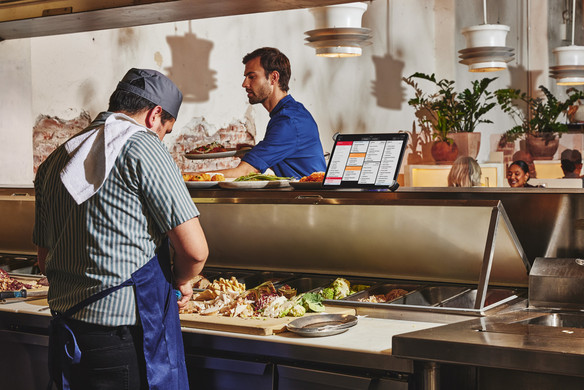Table of contents
The pandemic threw everything we knew about inventory planning out the window. Panic buying and increased customer demand caused some products to sell out while others gathered dust. Supply chains were stretched thin, forcing some businesses to find alternate places to source materials and fulfill their items. In fact, 56% of retailers say managing inventory was harder as a result of COVID-19, according to data from Square and Wakefield Research.
So business owners improvised. They talked to other business owners, found new suppliers, and tried out creative ways to get their stock moving and focus on demand planning.
1. Create a short list of other places to source from
Ian VanDam, the owner of eclectic retailer Civil Alchemy, sources handcrafted products from the most renowned makers in the world. But with supply chain disruptions preventing him from getting his items in time, VanDam had to get creative with figuring out where to buy his products. So he started sourcing from his local maker community in St. Louis. “Why would I add new products that I couldn’t guarantee when I have a maker who’s got a workshop a mile away from me?” he says.
To prepare your business for potential supplier issues, create a list of backups to source from so you can have multiple options without starting from scratch. Whether you need raw materials or finished products, manufacturers that are physically closer to you can typically ship items faster, which is essential if you’re dealing with supply chain disruptions.
To find more suppliers:
- Ask other business owners in your industry. If you use Square, the Seller Community is a helpful place to start.
- Check out online directories like the Alliance for American Manufacturing.
- Find new suppliers by searching for your products with their NAICS code.
Start building those relationships to see if new suppliers can not only work with your existing business model, but take it in a new direction. Use this business model canvas template to help you sketch out your ideas.
2. Use your POS reports to plan ahead
“We were used to ordering on Monday and getting inventory on Wednesday,” says Keith Miller, the owner of Minneapolis-based dog grooming business, Bubbly Paws, which also has a thriving retail arm. That quick turnaround time was no longer possible during the pandemic. Today, Miller relies on his POS reports to ensure that his purchase orders map to what customers are buying at each location and inventory arrives on time. “You really need to plan ahead with it,” stresses Miller.
Take a page from Miller’s experience and dig into your POS reports to help you stay proactive with your stock planning. For instance, here are a few POS reports that can help you get a deeper understanding of how you’re doing — and where to make a move.
- Stock levels: This report can help you get ahead of reordering items, especially if shipping times are slower or if there are any shortages from your suppliers. With Square for Retail, you can set an alert to get notified if your stock is low for a specific item, putting you in a better position with demand planning.
- Vendor sales report: Not only can you see what’s selling at a specific time, but you can also measure how each of your vendors is doing. Depending on the results, this may prompt you to revisit your commitments and see where you want to find new vendors. It could also spark conversations with your suppliers to see if you can order best-selling items in bulk to ensure you don’t run out, and take advantage of any bulk pricing.
- Store reports: If you have multiple locations, a store report can help you decide if you need to transfer inventory between stores, which can help you stock up if one location is low on a particular item.
3. Add nonperishables to your product lineup
If you sell perishable items, like food or flowers, adding nonperishables to your lineup can help you diversify your inventory. Eco-conscious florist Stems Brooklyn sells flowers, but owner Suzanna Cameron also carries items like planting supplies, candles, pots, and potting tools, which are listed alongside floral arrangements on her online store.
Another approach is to look into goods that have longer shelf lives, even if they’re limited. Bailey Ryan, the owner of experiential plant store PlantHouse, told Talking Squarely she sells air plants that don’t require soil to grow since they’re sturdy enough to withstand shipping. “They don’t have any soil and they’re really easy to ship,” she explains. Today Ryan sells a larger selection of products at her store, and including items that last longer helps lower risk for her business.
Look at your POS reports to identify your top-selling items. Then think about any nonperishable items that are similar or can be paired with those products that are selling well, enabling you to stay relevant to the same group of customers. For instance, if you see that jams and cheese wheels are selling out, consider adding charcuterie boards and serving accessories to your product lineup.
4. Try out new ways to move excess inventory
Cameron, the owner of Stems Brooklyn, has multiple facets to her floral design business, including a retail shop, workshop space, and events arm. On Talking Squarely, she emphasizes the importance of offering delivery to continue to move products. “If you have an opportunity to offer a delivery service and maybe you haven’t in the past, now is definitely the time to do it,” she recommends. “There’s a huge demand for delivery and we’ve seen it in our own business.”
Beyond testing out different fulfillment methods, you can also look at selling on new channels like social media to help you move products that aren’t selling as well on a particular channel. Whatever strategies you decide to try out, make sure your team is trained to sell across channels to create a more connected experience for your customers.
5. Invest in inventory management software and upload your items
To get in control of your inventory, you first need to know what you have in stock and where you need to double down. And those insights come from using inventory management software. While inventory forecasting and planning has become more complicated in 2020, 74% of retailers say they plan to use real-time inventory software in 2021 to stay one step ahead. And over one in three retailers interested in real-time inventory software are already using it.
Using software to manage your inventory also opens you up to sell in different ways. Once your inventory is organized, photographed, and uploaded to your system, you can then choose the channels that make the most sense for what you sell. For instance, because Texas-based gift shop Heartisans Marketplace had already uploaded their inventory a few years back, they were ready to start their online store in 2020 since the hard work was already done. Today they’ve expanded to selling on social media, which is only possible because they can track their thousands of SKUs in one central place.
You have a lot of levers to work with to help you stay on top of your inventory planning. Incorporate the strategies above to remain proactive with what you sell and how you sell it, so you can put more energy into planning for the future.
![]()














